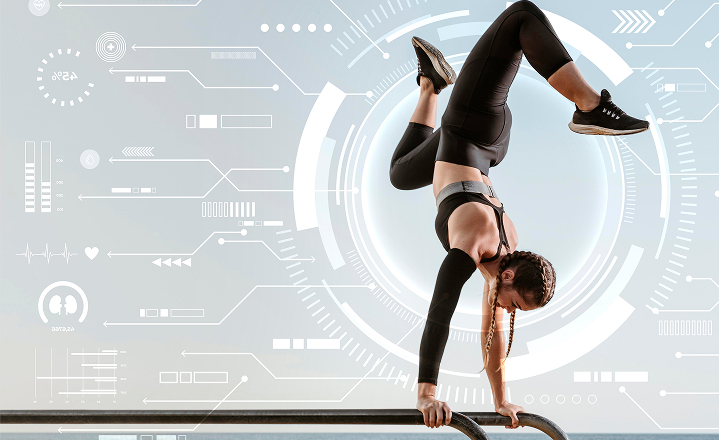BLOG POST
HIIT vs. Steady-State Cardio
The Counterintuitive Truth That Changed How I Train
The Morning I Realized I Was Training Myself Into the Ground
Three years ago, I couldn’t figure out why I felt exhausted all the time.
I was doing everything “right” crushing HIIT workouts four days a week, pushing through soreness, wearing my fatigue like a badge of honor.
(For those unfamiliar: HIIT stands for High-Intensity Interval Training short bursts of all-out effort like sprinting for 30 seconds, followed by brief recovery periods. Think: 20 minutes of intense intervals instead of 60 minutes of steady jogging.)
Then I met a former Olympic coach who asked me a simple question:
“If you’re so fit, why do you look so tired?”
That question changed everything.

The Wake-Up Call
He explained something nobody talks about in the fitness world: The hardest workers aren’t always the smartest trainers.
Elite athletes who perform at the highest level for decades weren’t doing what I was doing. They weren’t constantly redlining. They weren’t treating every workout like a war.
They had a secret: strategic intensity mixed with sustainable movement.
And the data backed it up. Studies show that VO2max, the strongest predictor of how long you’ll live improves through both high-intensity and moderate-intensity training. But here’s the catch: only one of them you can sustain for a lifetime.
What I Got Wrong About HIIT
Don’t get me wrong, I love HIIT. Those 20-minute sessions that leave you breathless? They work. They build cardiovascular capacity fast.
For context: HIIT means doing something like sprint intervals: 30 seconds of running as fast as you possibly can, then 90 seconds of walking to recover. Repeat 6-8 times. You’re done in 20 minutes and completely wiped out.
Compare that to steady-state cardio: jogging at a comfortable pace where you could hold a conversation for 45 minutes straight.
But I was using HIIT like a hammer, treating every workout like a nail.
Here’s what nobody told me:
True HIIT where you’re actually hitting 90-95% of your max heart rate is incredibly taxing on your nervous system. Add that to business stress, travel, and the everyday demands of building something meaningful?
I wasn’t optimizing. I was slowly burning out.
I thought pushing harder was the answer. Turns out, I needed to train smarter.
The Steady-State Revelation
The Olympic coach suggested something that felt almost insulting at first: “Try going for a walk.”
Not a power walk. Not with a weighted vest. Just… a walk. 40 minutes. Conversational pace.
This is what “steady-state cardio” means: maintaining a moderate, consistent effort for an extended period. You could talk to someone while doing it. Your heart rate stays elevated but not maxed out. Think: brisk walking, easy jogging, cycling at a comfortable pace, swimming laps without racing.
I resisted. It felt too easy. Too… unproductive.
But here’s what happened:
Those walks became where I did my best thinking. Problems I’d been wrestling with for weeks suddenly had solutions. Strategic decisions became clearer.
And physically? I stopped feeling constantly beaten up. My sleep improved. My energy stabilized.
I wasn’t training less. I was recovering better between the hard sessions.
Steve Jobs knew this. His famous walking meetings weren’t about fitness, they were about creating the mental space where breakthrough thinking happens.
The Protocol That Actually Works
Here’s what I do now, and what I recommend to every entrepreneur who asks:
2-3 times a week: 30-45 minutes of steady-state cardio
- Walk, cycle, swim, row whatever you enjoy
- Keep it conversational
- Use it for audiobooks, thinking, or just being present
1-2 times a week: 15-20 minutes of true HIIT
- Only on days when I’m genuinely rested
- Always warm up properly (this is non-negotiable)
- Sprint intervals, bike sprints, rowing make it count
1-2 days: Rest or gentle movement
- Yoga, stretching, easy walks with family
The difference?
I can sustain this forever. I’m not constantly sore. I look forward to training instead of dreading it. And my fitness markers, the ones that actually predict longevity keep improving.
The Question That Changes Everything
Here’s what I ask myself now before every workout:
“Can I do this same training pattern for the next 30 years?”
If the answer is no if it’s held together by willpower and unsustainable intensity then it’s the wrong approach.
Because longevity isn’t about the hardest workout you can survive this week. It’s about the training rhythm you can maintain for decades.
The entrepreneurs I know who are still vital and energetic in their 60s and 70s? They didn’t get there by going hardest. They got there by going smartest and never stopping.
Your Next Step
This week, try this:
Keep one or two hard sessions. The intensity matters just not every day.
Add one 40-minute steady-state session. Walk, cycle, whatever feels good. No agenda except movement.
Notice how you feel. More energized? Clearer thinking? Sleeping better?
That’s your body telling you something important.
The Truth About Sustainable Performance
I used to think rest days were for weak people. That going easier meant I was getting soft.
Now I understand: Strategic recovery isn’t weakness. It’s wisdom.
The same discipline that built your business consistency over heroics, strategy over brute force applies to your body too.
You didn’t build your empire through unsustainable sprints. You built it through showing up, making smart decisions, and playing the long game.
Your fitness deserves the same approach.
Because what’s the point of building something extraordinary if you’re too burned out to enjoy it?
Train smart. Recover well. Keep moving.
That’s the real secret.
Want to go deeper on longevity training that actually fits your life? This is just the beginning of what’s possible when you stop fighting your body and start working with it.
Share this with someone who’s training hard but feeling tired. Sometimes the answer isn’t more intensity, it’s more intelligence.
#LongevityTraining #SmartCardio #SustainablePerformance



